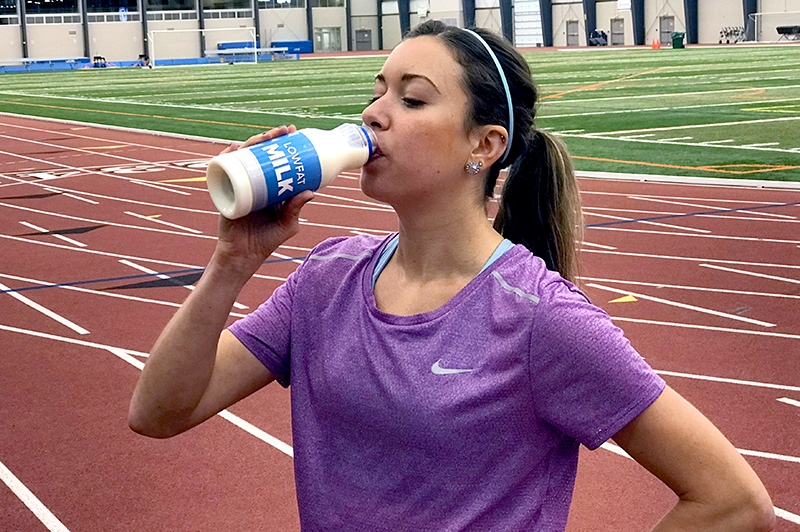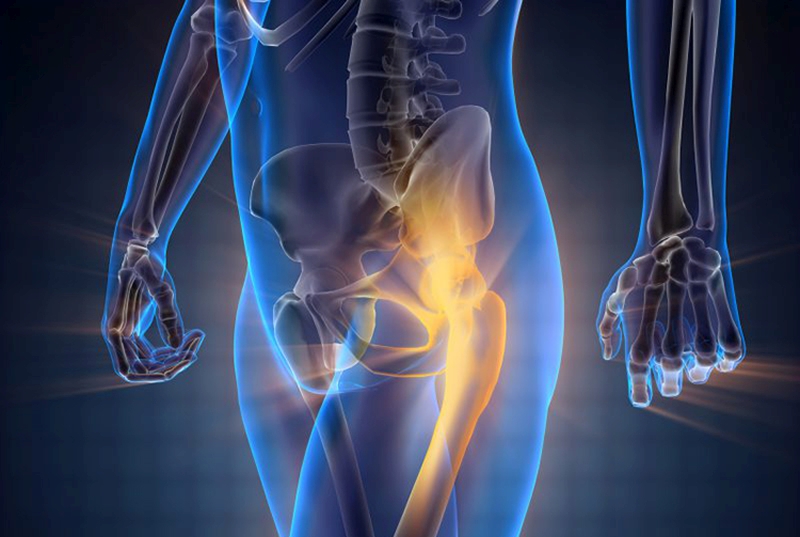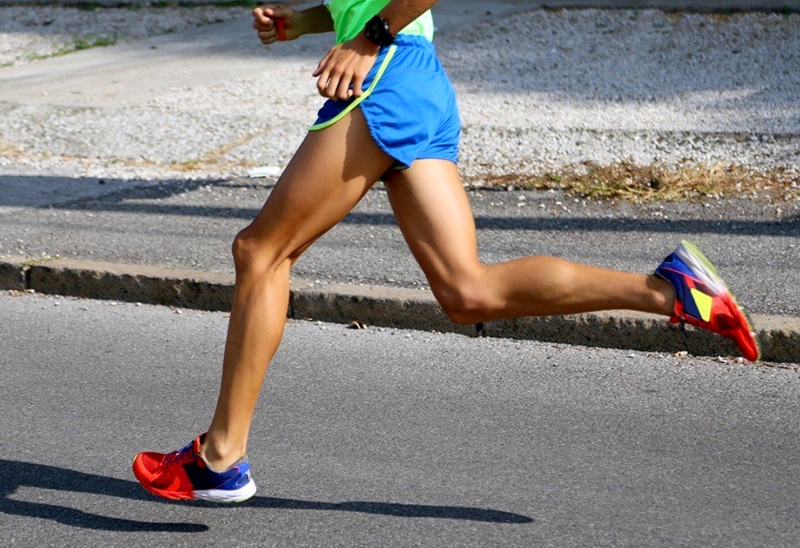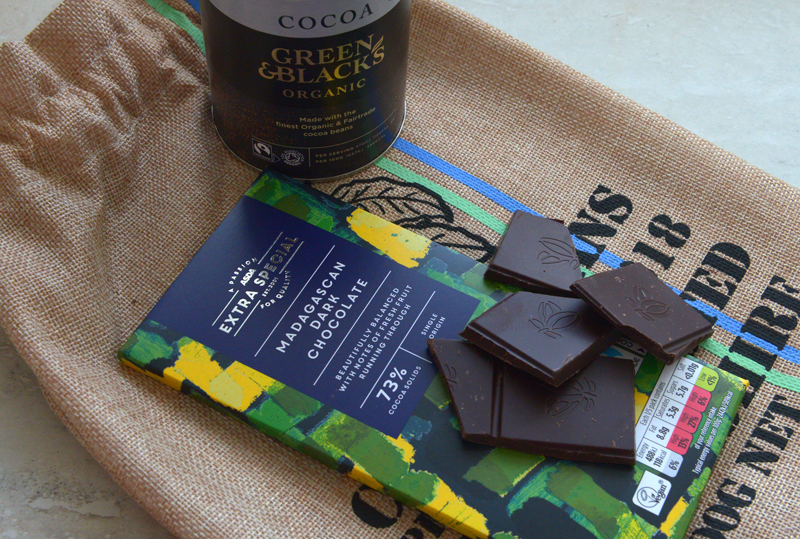You are viewing 1 of your 1 free articles. For unlimited access take a risk-free trial
Endurance nutrition: boning up on calcium
Tom Whipple explains why many endurance athletes have an insufficient calcium intake, the associated implications for bone health and shows how calcium intake can be optimised with some simple dietary changes
Numerous studies have confirmed that an inadequate intake of calcium is a risk factor for stress fractures and bone loss. As an endurance athlete, your long term skeletal health is at risk and the stakes are high. Do you know how much calcium you currently consume? Do you know what the best sources of calcium are? Do you appreciate how certain types of training or racing may influence your needs? And do you realise that when it comes to calcium and bone health, timing is everything?How much calcium do you really need?
Do you know how much calcium you currently consume? One simple way is to use the ‘International Osteoporosis Foundation’s’ (IOF) calcium calculator (see figure 1). This free app helps you compare your daily intake to that of the standard recommendation of 1,000 mg per day (for adults 19-50 years). The IOF intake guideline for females over 50 years and males over 70 years is slightly higher at 1200 mg per day.FIGURE 1: IOF CALCIUM CALCULATOR APP SCREENSHOT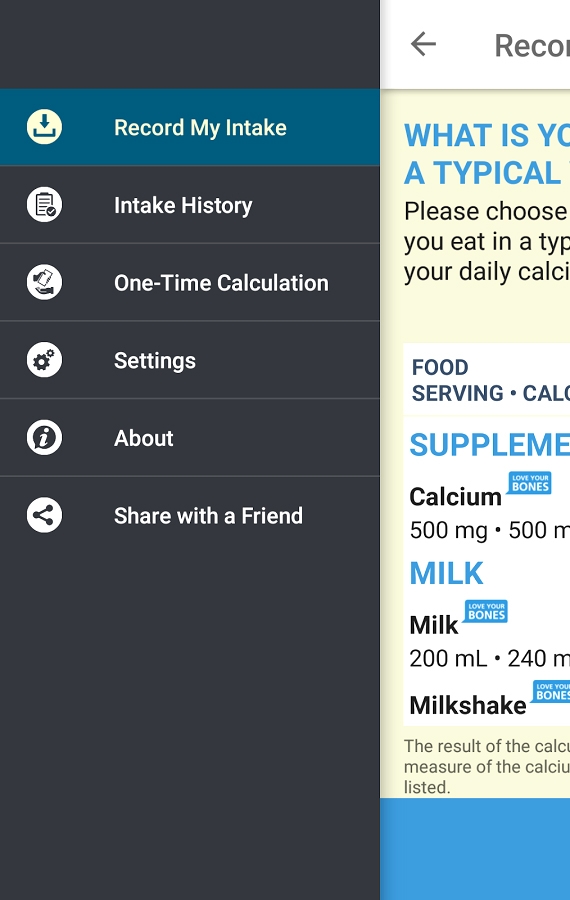
The recommended daily intake (RDI) for calcium has been set to prevent osteoporosis in the general, population – not athletes – and there is no allowance for an individual’s size, activity level, or sweat rate. Because calcium plays such a critical role in muscle contraction, glycogen (stored muscle carbohydrate) mobilisation, pH (acid/base) regulation, and is lost in sweat, it’s a safe bet that the standard guidelines are likely to be inadequate for endurance athletes. Consider the 1,000 mg per day recommendation therefore as a starting point for your easy training or recovery days - but realise that additional calcium is absolutely necessary when you are engaged in serious training or competition.
There is some evidence to suggest that in order to prevent stress fractures and bone loss, athletes and military populations should consume 2,000 mg of calcium per day – double the standard recommendations. In a 2015 study of competitive male cyclists, researchers found that despite taking 1600 mg of calcium (and 1000IUs of vitamin D), significant bone loss occurred in the hip over a seasonJ Sports Med Phys Fit. 2015 Sep;55(9):940-5. Another study on basketball players found that by consuming at least 2000 mg of calcium per day, both bone and lean (muscle) mass increased during a season; players who consumed less than 2000mgs lost bone mass and did not gain muscleJAMA. 1996 Jul 17;276(3):226-230.
The upper level (UL) of calcium intake for the general population has been set at 2,500mgs per day. To date, no such limit has been established for athletes. Dr. Eric Orwoll, who is Director of the Oregon Health and Science University and expert on male osteoporosis, said in a 2004 interview “You can speculate all you want about cycling and osteoporosis, but get enough calcium (and vitamin D) and you’re okay.”
TYPICAL DAILY CALORIE EXPENDITURE
*Active individuals: Around 2,500 calories per day*Pro cyclists: Over 7,000 calories per day
*Ironman triathlete: 8,000-10,000 calories per day
*Michael Phelps: Over 10,000 calories per day
Calories and calcium
In order to maximise bone health and performance, both calories and calcium must be consumed on a sliding scale. The World Health Organisation recommends active women and men consume approximately 2,500 calories per day. The recommendation may be a reasonable base, but is of course inadequate for athletes, and falls well below what is necessary to support training and adaptive demands (see box above).Although your training may not be like Michael Phelps’, the likelihood that you are not eating enough to support optimal bone health is high. An overall calorie deficit has been consistently correlated with low calcium intake, stress fractures, and bone loss in athletes. A recent Stanford study reported that about a third of women and half of male college cross country runners were operating in a chronic energy deficitscopeblog.stanford.edu/2017/08/23.
By consuming greater amounts of calcium-rich food foods, athletes can frequently resolve energy deficits AND hit their calcium targets. For example, if an athlete increased his or her consumption of low-fat yogurt from 1 to 3 servings per day, energy would be boosted by 250 calories and calcium increased by 600 mg. As Princeton University’s Director of Sports Medicine Margot Putukian, MD is fond of saying, “Athletes need to make friends with food.”
CASE STUDY: DUATHLETE WITH OSTEOPOROSIS
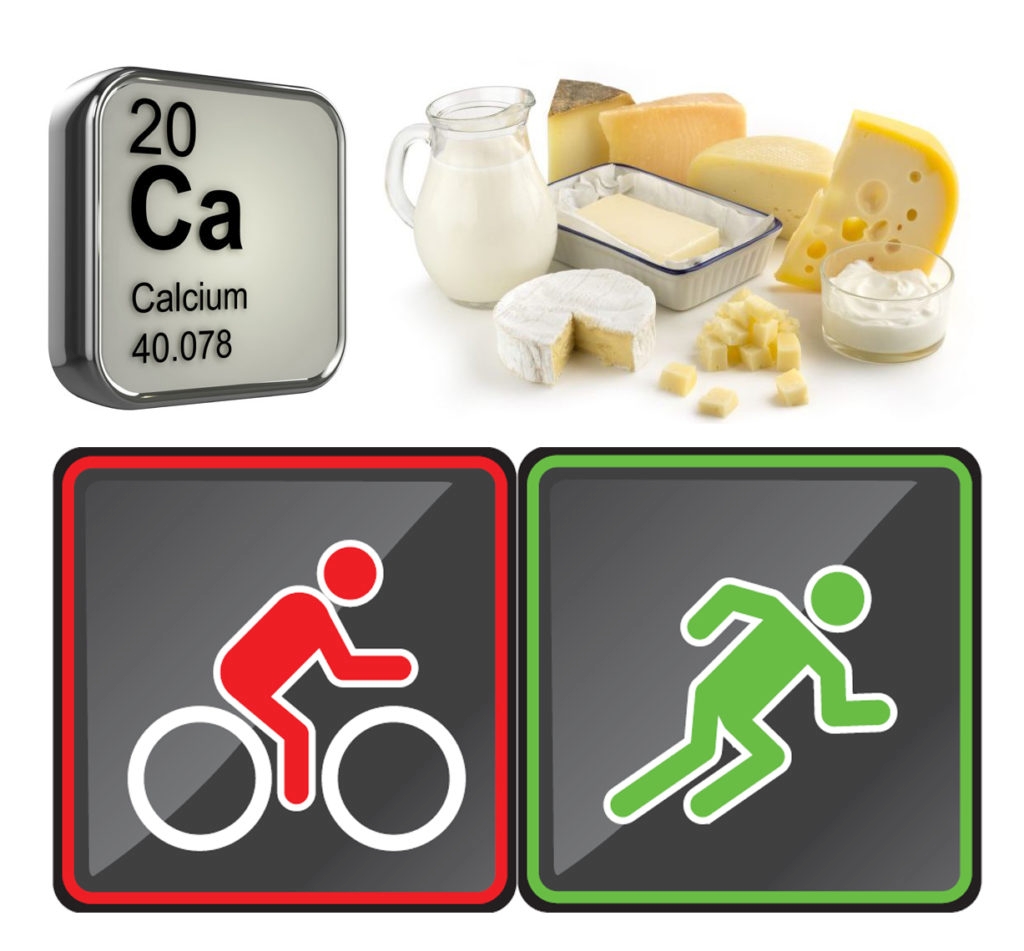
- 1 cup of non-fat yogurt (100 calories/300mg calcium)
- 3.75 oz of canned sardines (130 calories/300mg calcium)
- 1/4 cup of almonds (180 calories/80mg calcium)
- 1 cup of leafy green vegetable (15 calories/60mg calcium)
- Total calories= 425; Total calcium= 695 mg calcium
His post-treatment modified diet contained the following calcium-rich foods:
- 2 cups of low fat (2%) yogurt (340 calories/800mg calcium)
- 7.5 oz of canned sardines (260 calories/600mg calcium)
- 1/2 cup of almonds (360 calories/160mg calcium)
- 2 cups of leafy green vegetables (30 calories/120mg calcium)
- Total calories = 990; Total calcium = 1680mg
FIGURE 2: SOME CALCIUM-RICH FOODS
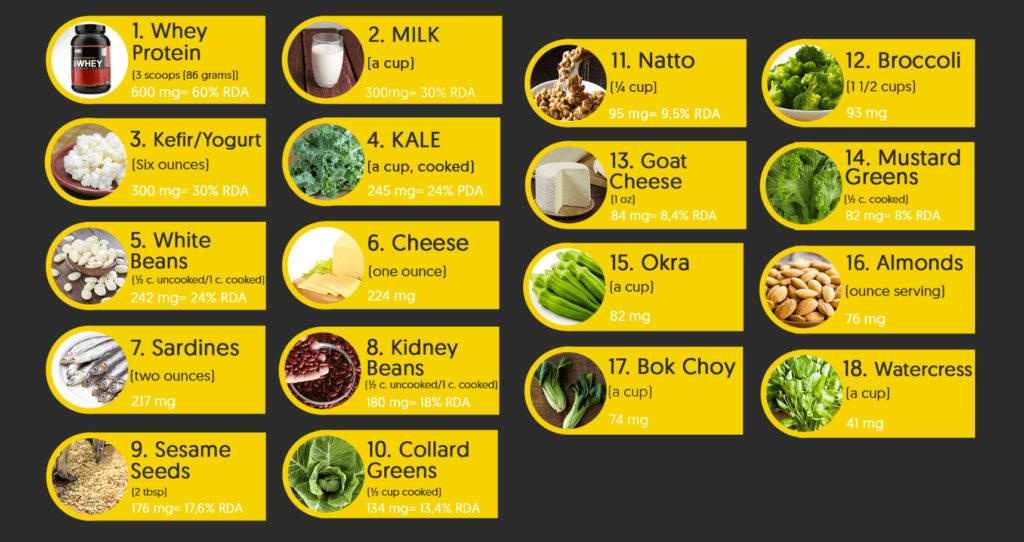
Calcium supplements
Experts in nutrition have differing opinions on the value of manufactured calcium supplements. Some believe they are an effective means to boost calcium intake while others contend they are ineffective and may even be associated with cardiovascular diseaseJAMA. 2013 Apr 22;173(8):639-46. One of the major concerns with calcium supplements is that their ‘bioavailability’ to the body may be lower than calcium that is attained from real food. A nutrient’s bioavailability refers to the degree of actual absorption relative to what is consumed.Supplemental calcium is commonly available in two forms; citrate and carbonate. In a head to head comparison, calcium citrate was found to increase circulating calcium by 76% more than calcium carbonateJ Clin Pharmacol. 1999 Nov;39(11):1151-4. If you are using the carbonate form, take it with food as the stomach’s acid improves its absorption. High-calcium mineral water is a great natural ‘supplement’ for endurance athletes as its absorption has been found to be better than manufactured tablets or cow’s milkAm J Clin Nutr. 2006 Aug;84(2):371-4.
Calcium helpers (agonists)
Although calcium is the primary structural element in bone, there are many other nutrients in food known to influence calcium balance and skeletal health. Studies consistently report that diets rich in whole foods and plants (especially fruits) are correlated with better bone strengthAdv Nutr. 2017 Jan 17;8(1):1-16 Br J Nutr. 2017 May;117(10):1439-1453. This is good news for vegan athletes or for those that have difficulty digesting dairy products. And if you’re interested in knowing the fruit that can confer the most beneficial effect on bone, the answer is dried plums - AKA prunesNutrients. 2017 Apr 19:9(4).pii:E401! Indeed, there are at least twenty-four scientific studies demonstrating the beneficial effects of prunes on bone health. Other important nutrients that support calcium and improve bone health include zinc, selenium, magnesium, potassium, vitamins C, D, and K, as well as omega 3 fatty acids (see this article for more on vitamin D and bone health).Calcium hinderers (antagonists)
Certain foods or nutritional states are known to limit calcium’s absorption and may be detrimental to bone health. Oxalates, caffeine, and sodium are known to reduce calcium’s bioavailability. Oxalates are naturally-occurring substances that bind with calcium and reduce its absorption. Ironically, many foods that contain oxalates are good sources of calcium - dark leafy green vegetables in particular (see figure 3). You can reduce the oxalate content of your greens by boiling them in water for a few seconds. Other foods that have high oxalate contents include: berries, chocolate, coffee, black tea, nuts, and soy. Don’t avoid these foods, but remember that the amount of calcium you absorb will be reduced in their presence.Caffeine in high doses has been demonstrated to increase calcium loss and inhibit bone forming cells. However, intakes below 400 mg per day (the equivalent in two cups of coffee) should not have a detrimental effect on bone. High sodium (salt) intake is also correlated with greater calcium losses. The current recommendation for sodium is 2,400 mg per day, but many people ingest two to three times this amount! Sodium intakes among athletes are highly variable and dependent upon taste, food choices, fitness, and level of environmental acclimatisation. As an athlete consumes less salt, becomes more fit, and trains in the heat, sodium requirements are decreased. Overall, less is more when it comes to sodium and bone health!
FIGURE 3: FOODS HIGH IN OXALATES (THAT HINDER CALCIUM ABSORPTION)
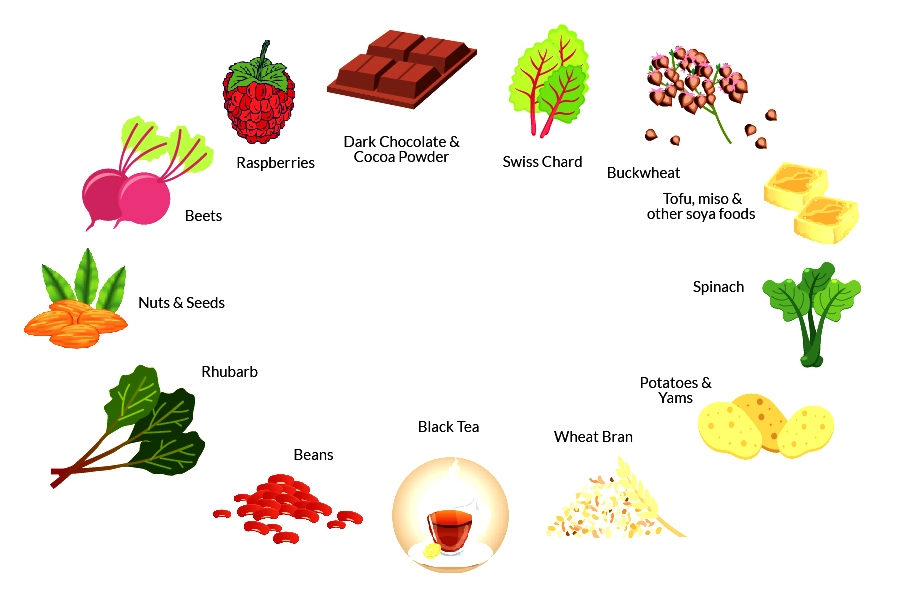
Oxalates, caffeine, and sodium are known to reduce calcium’s bioavailability
Training intensity and environmental considerations
High-intensity endurance exercise seriously challenges calcium status. As exercise duration and intensity increase, the muscles and blood become more acidic, and the body’s pH declines. Exercise physiologists refer to this state as an ‘exercise-induced acidosis’. As acidosis ensues and blood lactate levels increase, it’s the calcium ion that comes to the rescue. That’s because calcium is one of the body’s primary buffers (something that can soak up excess acidity/alkalinity) and works to maintain normal or near normal blood pH during high intensity exercise (around 7.3 – see figure 4).FIGURE 4: ACIDITY/ALKALINITY AND BLOOD PH
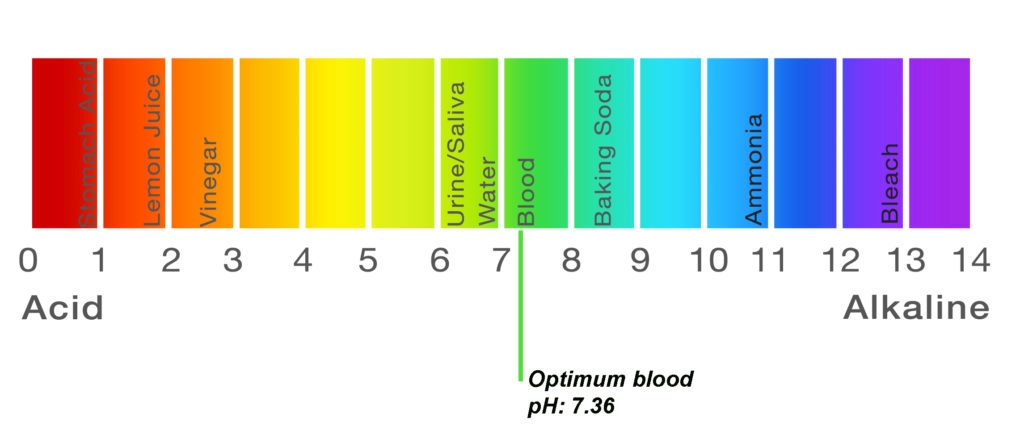
The intensity at which accelerated calcium buffering occurs is at or above the so-called ‘lactate threshold’ - especially for durations lasting longer than two minutes. Examples would include middle distance swimming or running, rowing 2000 meters, or a cycling breakaway. You should consider extensive threshold training or racing therefore as a risk factor for accelerated bone loss. Also, because calcium is lost in sweat, requirements are significantly greater when training or racing in hot weather. Studies of athletes have estimated calcium losses via skin sweating to be in the range of 100-200mg or more per hourCal Tiss Int. 2007 Jun;80(6)359-365. Calculate the amount of calcium lost in sweat during a marathon, bike century, or ironman-distance triathlon, and you can appreciate why calcium requirements for athletes are so great.
Timing is everything
Because calcium absorption is limited to 500mg or less per dose, its effectiveness will be maximised by spreading your intake throughout the day. With that being understood, there seems to be three critical times to consider: before training, during training, and at bedtime.A 2004 study evaluated 12 elite male triathletes during 60 minutes of cycle ergometer work at 80% of VO2max. The experimental group was provided 1,000mg of high-calcium mineral water just before and during the time trial. Researchers evaluated the activity of bone remodelling cells and discovered that when exercise was performed in the absence of calcium, markers of bone breakdown began to rise after 30 minutes and remained elevated by 45-50% two hours post exercise. However, consumption of the calcium-rich water completely suppressed the skeleton’s breakdownCal Tis Int. 2004 74(5):407-414.
Like all body tissues, your skeleton is being constantly remodelled. When blood levels of calcium decline, specialised cells (osteoclasts) liberate stored calcium from your bones. Osteoclasts are known to increase late at night and into the early morning hours while you sleep. Studies have shown that if you consume a calcium supplement or calcium rich “midnight snack”, the rise in osteoclast activity is blunted and your bone losses are minimisedJ Clin End Met. 1994;79(3):730-735 Eur J Nutr. 2008;48(1):45-53J Med Assoc Thai. 2005 Jun:88 Suppl 1:S12-20.
SUMMARY OF RECOMMENDATIONS
A number of recommendations have been made in this article, which are summarised here:- Balance your dietary energy intake and exercise expenditure.
- Consume calcium on a sliding scale in the range of 1,000-2,500 mg per day.
- Spread your calcium intake through the day in doses of 500mg or less.
- Eat a diet rich in plant foods, especially fruits.
- Limit caffeine and sodium intake, which in high doses can limit calcium’s absorption and accelerate bone loss.
- Remember that threshold intensity training increases your calcium requirement and increases the risk for accelerated bone loss. Likewise bear in mind that training or racing in hot weather increases calcium loss through sweat.
- Consume a calcium-rich meal or drink prior to exercise.
- Consume a calcium-supplemented sports drink or mineral water when training or racing for over one hour’s duration.
- Consume a calcium-rich midnight snack to reduce nocturnal bone loss.
Related Files
Newsletter Sign Up
Testimonials
Dr. Alexandra Fandetti-Robin, Back & Body Chiropractic
Elspeth Cowell MSCh DpodM SRCh HCPC reg
William Hunter, Nuffield Health
Newsletter Sign Up
Coaches Testimonials
Dr. Alexandra Fandetti-Robin, Back & Body Chiropractic
Elspeth Cowell MSCh DpodM SRCh HCPC reg
William Hunter, Nuffield Health
Keep up with latest sports science research and apply it to maximize performance
Today you have the chance to join a group of athletes, and sports coaches/trainers who all have something special in common...
They use the latest research to improve performance for themselves and their clients - both athletes and sports teams - with help from global specialists in the fields of sports science, sports medicine and sports psychology.
They do this by reading Sports Performance Bulletin, an easy-to-digest but serious-minded journal dedicated to high performance sports. SPB offers a wealth of information and insight into the latest research, in an easily-accessible and understood format, along with a wealth of practical recommendations.
*includes 3 coaching manuals
Get Inspired
All the latest techniques and approaches
Sports Performance Bulletin helps dedicated endurance athletes improve their performance. Sense-checking the latest sports science research, and sourcing evidence and case studies to support findings, Sports Performance Bulletin turns proven insights into easily digestible practical advice. Supporting athletes, coaches and professionals who wish to ensure their guidance and programmes are kept right up to date and based on credible science.
